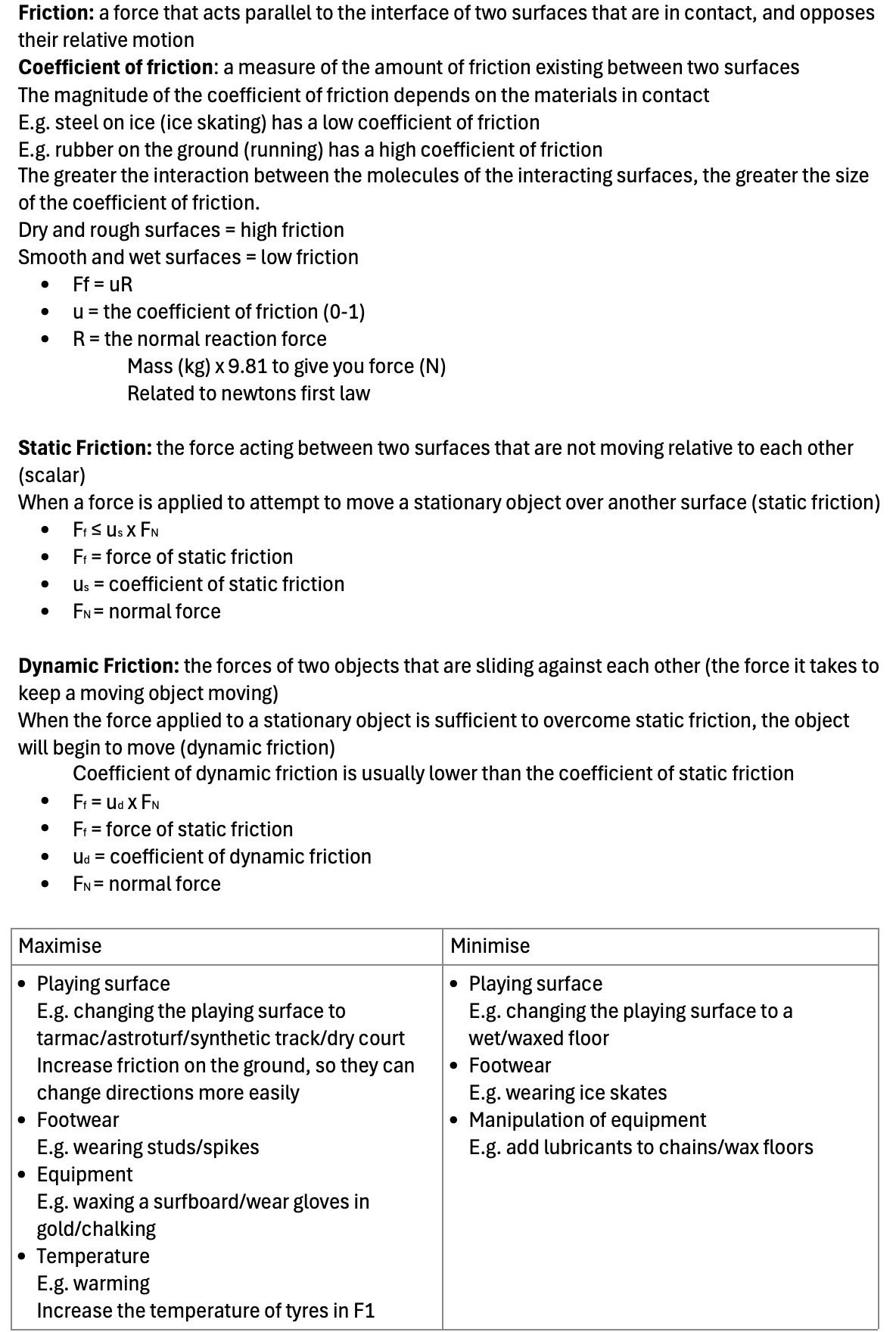Friction
Friction: a force that acts parallel to the interface of two surfaces that are in contact, and opposes their relative motion
Coefficient of friction: a measure of the amount of friction existing between two surfaces
The magnitude of the coefficient of friction depends on the materials in contact
E.g. steel on ice (ice skating) has a low coefficient of friction
E.g. rubber on the ground (running) has a high coefficient of friction
The greater the interaction between the molecules of the interacting surfaces, the greater the size of the coefficient of friction.
Dry and rough surfaces = high friction
Smooth and wet surfaces = low friction
Ff = uR
u = the coefficient of friction (0-1)
R = the normal reaction force
Mass (kg) x 9.81 to give you force (N)
Related to newtons first law
Static Friction: the force acting between two surfaces that are not moving relative to each other (scalar)
When a force is applied to attempt to move a stationary object over another surface (static friction)
Ff ≤ us x FN
Ff = force of static friction
us = coefficient of static friction
FN = normal force
Dynamic Friction: the forces of two objects that are sliding against each other (the force it takes to keep a moving object moving)
When the force applied to a stationary object is sufficient to overcome static friction, the object will begin to move (dynamic friction)
Coefficient of dynamic friction is usually lower than the coefficient of static friction
Ff = ud x FN
Ff = force of static friction
ud = coefficient of dynamic friction
FN = normal force
Maximise | Minimise |
|
|
